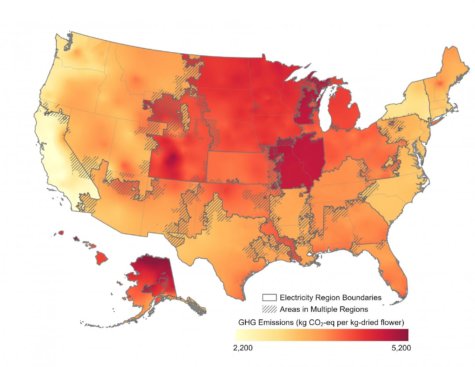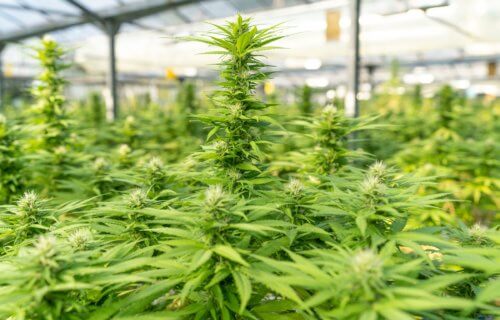FORT COLLINS, Colo. — Although marijuana may be a natural product, it turns out America’s cannabis industry is becoming a lot less eco-friendly. A new report reveals that the energy it takes to grow marijuana in large quantities is sending greenhouse gas emissions through the roof, literally.
Researchers from Colorado State University say the $13 billion cannabis industry is a booming business across the United States. However, most of that commercial production takes place indoors. As a result, the gas and electricity it takes to run all these operations seriously worsens the industry’s carbon footprint.
The team adds that the problem shows no signs of slowing down as more states legalize marijuana’s use, both medically and recreationally. Study authors performed a life-cycle assessment of indoor cannabis operations across the U.S. Their report analyzed the energy and materials needed to grow marijuana commercially in each U.S. county in order to find the amount of emissions it causes.
What makes growing marijuana so harmful to the environment?
The results reveal the bulk of greenhouse gases come from the electricity and natural gas consumption involved in growing cannabis. This power helps to run high-intensity grow lights, regulate the grow house’s temperature, and supplies carbon dioxide which accelerates plant growth.
“We knew the emissions were going to be large, but because they hadn’t been fully quantified previously, we identified this as a big research opportunity space,” study leader and graduate student Hailey Summers says in a university release. “We just wanted to run with it.”
The report updates a previous study by Lawrence Berkeley National Laboratory researchers which looked at small-scale grow operations in California. Those results, however, predate the growing number of states to follow Colorado in legalizing the drug in 2012. Currently, 36 states allow the use of medical marijuana and 15 allow recreational use.
Emissions vary, but are still bad all over
The CSU findings reveal that cannabis growing emissions vary greatly depending on the area. Much of this has to do with the local climate and electrical grid emissions.

Their map, however, captures the potential toll of growing marijuana in large commercial warehouses — measuring the damage in emissions per kilogram of cannabis flower. Those estimates also show that growing the plant by artificial means is astronomically more harmful to the environment than growing it outdoors or in a greenhouse.
Researchers find indoor cannabis cultivation creates life-cycle greenhouse gas emissions between 2,283 and 5,184 kilograms of carbon dioxide for every kilogram of marijuana. For comparison, the electricity it takes to grow the drug outdoors or in a greenhouse produces a mere 22.7 to 326.6 kilograms of carbon dioxide.
Although those figures, from the New Frontier Data 2018 Cannabis Energy Report, don’t factor in anything but electricity, they show the vast difference in growing the plant outdoors.
The study notes heating, ventilation, and air conditioning systems create the largest energy demand, regardless of the local climate. For places like Florida, this means more dehumidifying systems. In Colorado however, the energy costs go into heating needs.
The team is now looking to extend their models to compare the tolls coming from indoor and outdoor growing operations. They hope such a review can help the nation’s growing cannabis industry deal with the environmental impacts of growing marijuana on a commercial level.
“We would like to try and improve environmental impacts before they have become built into the way of doing business,” researcher Evan Sproul concludes.
The study appears in the journal Nature Sustainability.
